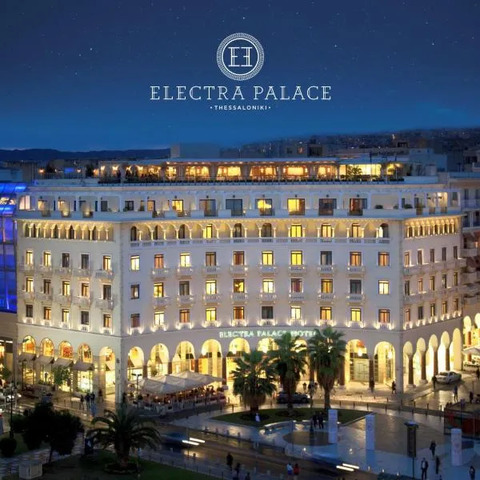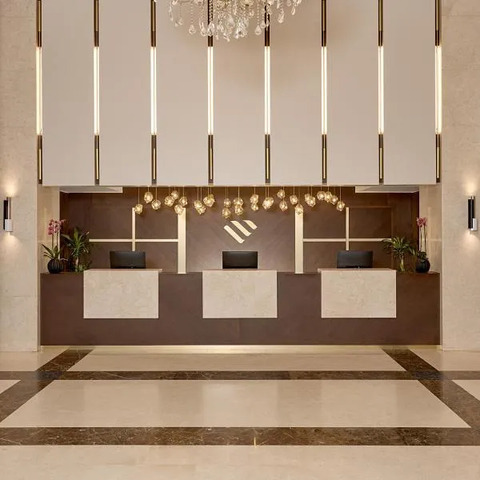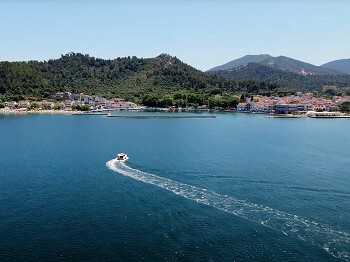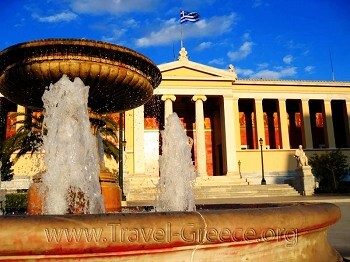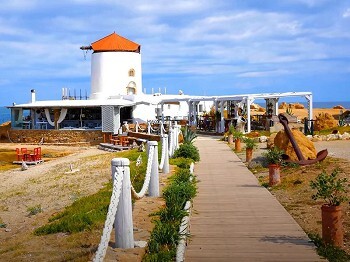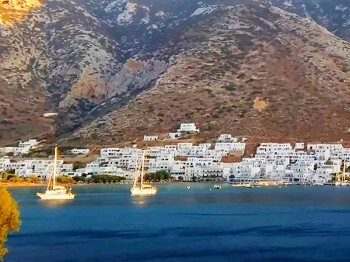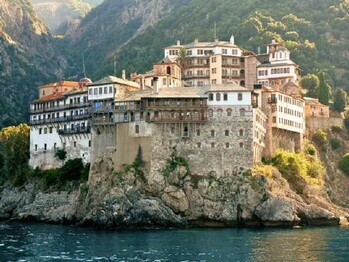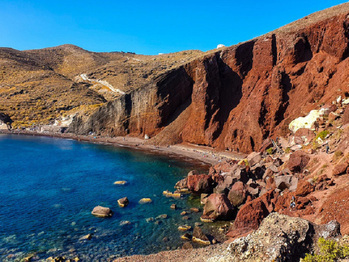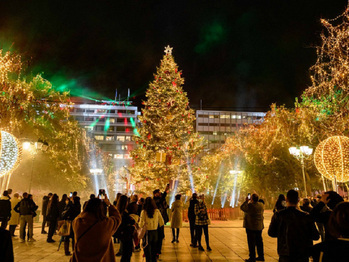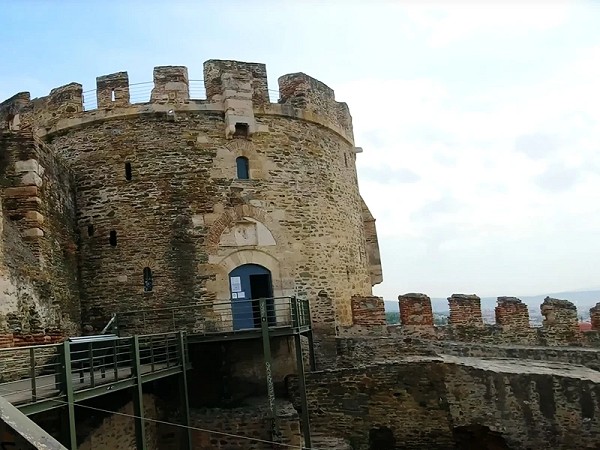
Thessaloniki, Greece's vibrant second city, is a treasure trove of history and culture. Nestled between the azure Aegean Sea and the lush slopes of Mount Chortiatis, this bustling metropolis offers a rich tapestry of historical sites that span centuries. From ancient Roman Ruins to Byzantine churches and Ottoman monuments, Thessaloniki's historical landscape provides a fascinating journey through time. In this guide, we’ll explore some of the most captivating historical sites you must visit in Thessaloniki.
We suggest for your stay:
Still Looking for the Perfect Stay?
1. Rotunda of Galerius: A Monumental Marvel of Roman Architecture
The Rotunda of Galerius, originally conceived as a mausoleum for the Roman Emperor Galerius, stands as a colossal testament to Roman architectural prowess. Built in the early 4th century AD, this circular building is renowned for its impressive dome and vibrant mosaics. Today, the Rotunda functions as both a museum and a church, offering visitors a glimpse into its varied past. The interior mosaics, depicting scenes from Christian Iconography, are particularly remarkable and Highlight the Rotunda's transformation from pagan Temple to Christian place of worship.
2. White Tower: The Iconic Symbol of Thessaloniki’s Historical Legacy
One of Thessaloniki’s most iconic Landmarks, the White Tower, is a must-see for history enthusiasts. Constructed during the Byzantine era, this cylindrical tower was initially part of the city’s fortifications. Throughout its history, it has served various purposes, including a fortress, a prison, and a museum. Today, it houses an exhibition dedicated to the city’s history and provides panoramic Views of Thessaloniki from its top. The White Tower’s Historical significance and Architectural beauty make it a Central feature of the city's Heritage.

3. Ancient Agora: The Heart of Thessaloniki’s Roman Past
The Ancient Agora of Thessaloniki was once the bustling center of public life in the Roman city. This archaeological site, located near the city center, offers a fascinating glimpse into the urban planning and daily life of ancient Thessaloniki. Visitors can explore the Remains of various public buildings, including The Odeon, a small Theatre that once hosted musical Performances. The Agora’s extensive Ruins, including remnants of shops, baths, and administrative buildings, provide an evocative Experience of the city’s Roman past.
4. Arch of Galerius: A Triumph of Roman Engineering
Built in the early 4th century AD to commemorate Emperor Galerius’ victories, the Arch of Galerius is a stunning example of Roman triumphal Architecture. This monumental archway, adorned with intricate bas-reliefs depicting scenes from Galerius’ campaigns, was part of a larger complex that included the Rotunda and the Hippodrome. Though partially damaged over the centuries, the surviving sections of the arch still showcase the grandeur of Roman artistic and engineering achievements.
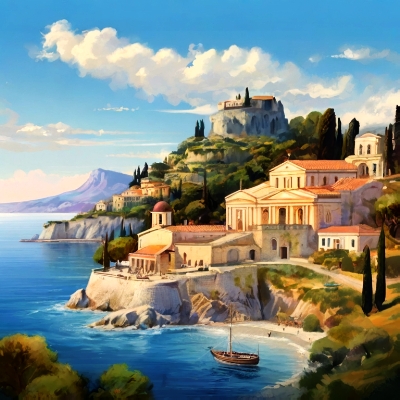
5. Church of Agios Dimitrios: A Spiritual and Historical Beacon
The Church of Agios Dimitrios, dedicated to the patron saint of Thessaloniki, is a significant site both religiously and historically. Built on the site of the martyrdom of Saint Dimitrios, this grand Basilica Dates back to the 7th century AD. The church features an impressive array of Byzantine mosaics and Frescoes that are invaluable examples of early Christian art. The crypt of Saint Dimitrios, which is open to visitors, adds to the church’s profound historical and spiritual Significance.
6. Byzantine Walls of Thessaloniki: Fortifications That Tell a Story
The Byzantine Walls of Thessaloniki offer a fascinating glimpse into the city’s medieval defenses. Stretching over several kilometers, these fortifications were built to protect Thessaloniki from various invaders throughout its history. Walking along the walls provides stunning Views of the city and the sea, as well as an opportunity to explore several well-preserved towers and gates. The walls’ strategic layout and construction reflect the importance of Thessaloniki as a key fortress in the Byzantine Empire.
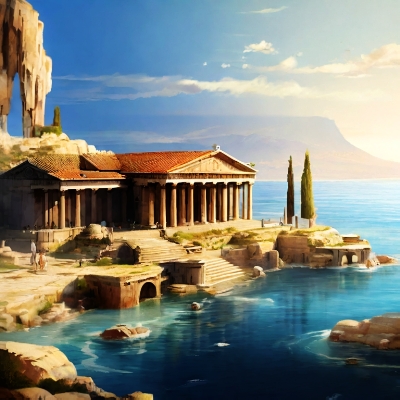
7. Archbishopric of Thessalonica: The Historical Center of the Orthodox Church
The Archbishopric of Thessalonica, an important ecclesiastical center, plays a crucial role in the city’s religious history. The Archbishopric building, with its neoclassical Architecture, serves as the administrative center for the Greek Orthodox Church in Thessaloniki. Visitors interested in Orthodox Christianity will find the building’s historical context and its role in shaping the city’s religious landscape to be of great interest. The Archbishopric’s archives and museum offer additional insights into the rich ecclesiastical Heritage of Thessaloniki.
8. Hippodrome of Galerius: The Arena of Ancient Spectacles
The Hippodrome of Galerius, once a grand arena for chariot races and other public spectacles, is another fascinating historical site in Thessaloniki. Though now in Ruins, the remnants of the Hippodrome’s seating and track provide a glimpse into the grandeur of ancient public entertainments. The structure, which could accommodate thousands of spectators, was an important venue for civic events and demonstrates the scale of public life in Roman Thessaloniki.
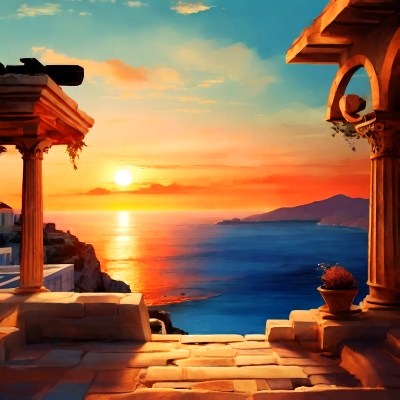
9. Arch of Triumph: A Historical Gateway of Thessaloniki
Often overshadowed by the more famous Arch of Galerius, the Arch of Triumph in Thessaloniki is another remarkable Monument from the Roman era. This arch, located near the city’s former Roman Forum, was built to celebrate the victories of Emperor Galerius. The surviving inscriptions and reliefs offer insights into the political and military achievements commemorated by the arch. Although smaller and less elaborate than its counterpart, the Arch of Triumph Remains a significant piece of Thessaloniki’s ancient history.
10. Museum of Byzantine Culture: A Comprehensive Exploration of Byzantine Heritage
For those interested in a deeper dive into Byzantine history, the Museum of Byzantine Culture is an essential destination. The museum, housed in a modern building that contrasts with its ancient Exhibits, features an Extensive collection of Byzantine Artifacts, including mosaics, Sculptures, and religious icons. The museum’s carefully curated Exhibitions provide a comprehensive overview of Byzantine art, culture, and daily life, making it an invaluable resource for understanding the historical context of Thessaloniki’s Byzantine legacy.
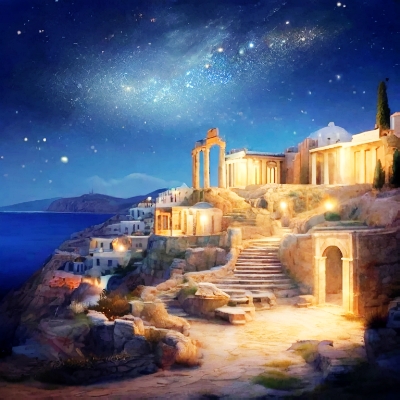
Conclusion
Thessaloniki’s historical sites offer a captivating journey through centuries of rich Heritage. From Roman triumphs and Byzantine splendor to Ottoman influences, the city’s monuments reflect a diverse and complex past. Whether you’re exploring the ancient Ruins of The Agora, marveling at the Rotunda’s mosaics, or strolling along The Byzantine Walls, Thessaloniki provides a vivid and immersive Experience of Greece’s multifaceted history. Make sure to include these remarkable sites in your itinerary and uncover the stories that have shaped this dynamic city.
